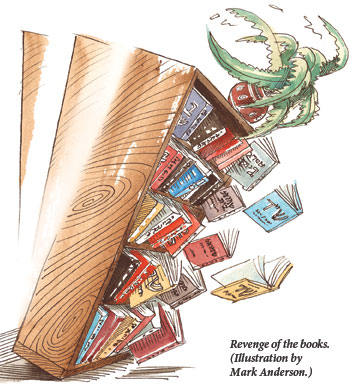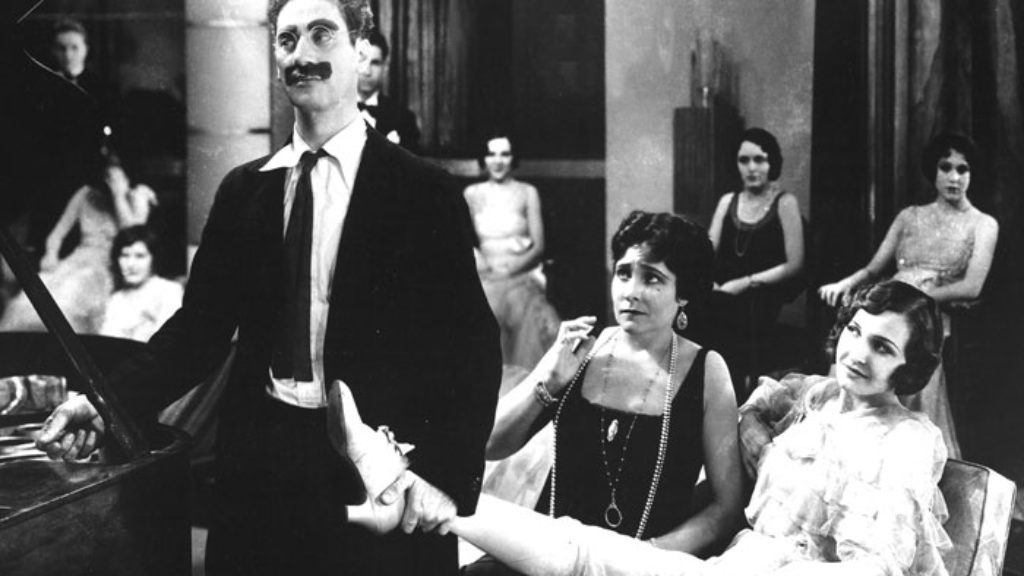The Wages of Criticism
The great 18th-century scholar Rabbi Aryeh Leib Ginsburg was not a shy critic. He excoriated implausible talmudic arguments, even, or perhaps especially, when they were made by earlier authorities. He once compared a halakhic proof of the 12th-century commentator Jacob ben Meir (widely known as Rabeinu Tam) to a “basketful of melons.” Of the Beit Shmuel, a commentary on the Shulchan Arukh from the 17th century, he wrote that the author, Shmuel ben Uri Shraga Phoebus, was “a student who had not reached the level of one who has the ability to determine halakhic rulings.” Borrowing from the creation story in Genesis, he accused the even more famous commentator Rabbi Yoel Sirkis (author of the Bach) of “building his proofs on a foundation that was formless and void (tohu va-vohu).” Of the Magen Avraham (Rabbi Abraham Abele Gombiner) Ginsburg wrote that he simply “did not know what he was talking about.” Certain passages penned by the authors of the Shakh and the Taz, two other leading commentaries on the Shulchan Arukh, were “nonsensical and incomprehensible.” As for his contemporaries, most “ruined good paper and ink and embarrassed the Torah.”

Like many rabbinic scholars, including those above, Ginsburg came to be known by the title of his book, Sha’agat Aryeh. In this case it is particularly apt, since it is a phrase (taken from the Book of Job) meaning “the roar of the lion.” Ginsburg’s harshness eventually killed him, or at least so the story goes. Or at least one version of the story.
In 1901, Aharon Marcus published Der Chassidismus, a history of Hasidism. The author was born in Hamburg, Germany, in 1843, and eventually settled in Poland where he became a follower of the Radomsker Rebbe. Among the many tales in his book, we learn that the founder of Hasidism, the Ba’al Shem Tov, knew that he would one day fulfill the commandment to support Torah scholars by helping the impoverished Sha’agat Aryeh, and carried a purse reserved just for him. But Der Chassidismus also includes a dramatic and now somewhat famous account of Ginsburg’s death.
[He] died in Metz at the age of 97 as a result of an accident that took place when a bookcase fell down on top of him. He remained buried for a half an hour until relatives found him. When he was unburied and restored to his regular position he said in Hebrew that all of the authors attacked him for ignoring their writings and arguing with their positions. For a half an hour he appeased them all, save for one: “the bad tempered Levush” (Rabbi Mordechai Yaffe), who did not forgive him. Because of this, he knew he would soon die.
In the end, according to Marcus, Ginsburg’s critical battles took over his entire world, symbolized by the bookcase, and the criticized were avenged. Although a scholar with few peers, the Sha’agat Aryeh’s narrow scope and querulous style of study, was the very source of his downfall. Thus, Marcus contrasted this paragon of the intellectual virtues of anti-Hasidic Judaism with the pure saintliness of the Ba’al Shem Tov.
But Ginsburg was 90, not 97, when he died in the French city of Metz, in 1785. Moreover, no one seems to have known of any such fatal trauma at the time. The notice of Ginsburg’s death in Ha-Measef, the leading journal of the Jewish Enlightenment, makes no mention of the incident, nor does a toppled bookcase appear in the written eulogies of Rabbis David Disbeck, Eleazar Kalir, or Eleazar Loew.
Even a century later, the legend does not seem to have been in circulation. In 1899, David Maggid wrote the first biography of Ginsburg in his Sefer Toldot Mishpachat Ginsburg, drawing on dozens of published books and archives. Since he recounted other fantastic tales, some of them negative, about Ginsburg, it is unlikely that Maggid would have withheld the tale of the falling bookcase. It is even less likely that Salomon Buber, Simon Dubnow, Abraham Harkavy, or any of the other important Jewish historians whose comments on Maggid’s book were appended at the end of the work would have omitted the story had they been aware of it. In 1954, Gershom Scholem wrote that Marcus’ accounts are “wonderful inventions of the author” and that his “stinging criticisms of scholars . . . are built upon nothingness,” which seems exactly right.
But that is not to say that Marcus’ story has not itself been built upon. A similar story is told about the eccentric composer and virtuouso, Charles-Valentin Alkan. In 1888, Alkan, an Orthodox Jew, was found dead in his kitchen, due, in all likelihood, to natural causes, though a coat rack may have fallen on him. These were the facts printed in obituaries and biographical sketches shortly after the composer’s passing. Nevertheless, in a 1954 biographical dictionary of musicians, Humphrey Searle told his readers that a large bookcase crushed Alkan after he removed a “Hebrew religious book” from one of its shelves, attributing the story to the French Jewish pianist Isidore Philipp.
This story was debunked in 1978 by Hugh Macdonald in The Musical Times, who suggests that Philipp made up the story. Robert Collect, a friend of Philipp, found this unlikely but had to admit that he “was a marvelous raconteur with a penchant for grotesque detail.” That Alkan’s family hailed from Metz, the same French city where Ginsburg died, suggests that Philipp may have borrowed the details of Ginsburg’s legendary death from Aharon Marcus’ folktale and given them to another one of Metz Jewry’s famous sons. (This is not, of course, to say that all stories of such deaths must derive from the legend of the Sha’agat Aryeh. When Leonard Bast dies of a heart attack after “he caught hold of a bookcase which came down over him,” in Howard’s End, E.M. Forster is not likely to have been thinking of Marcus’ version of the Sha’agat Aryeh’s death.)
As the teacher (along with the Vilna Gaon) of Rabbi Haim of Volozhin, who founded the first modern yeshiva, Ginsburg had methods, if not a manner, that lie at the foundation of the modern yeshiva. The story of his death reached that world in 1933 with Rabbi Yekutiel Kamelhar’s Dor De’ah (Enlightened Generation). Kamelhar, a rabbi and storyteller, drew on many of Marcus’ stories when he prepared his Hebrew hagiography of modern rabbinic personalities. Kamelhar includes the legend at the end of his biographical sketch of Ginsburg, though he left Marcus’ Hasidic polemics behind. It is Kamelhar’s version upon which all, or almost all, later versions of the story seem to be based.
The greatest writer to record the legend of the Sha’agat Aryeh’s death was certainly Israel’s Nobel Laureate S.Y. Agnon. His Sefer Sofer ve-Sipur (Book, Author, and Story) published in 1966, contains two versions of the story. One is a paraphrase of the Marcus-Kamelhar tale. The other is a version Agnon attributed to historian Jacob Naftali Hertz Simchoni, whom he had met in Europe before World War I. In that story, it was not the volume by Rabbi Mordechai Yaffe, but rather an edition of the Shakh, authored by Rabbi Shabbtai Ha-Kohen, that wreaked vengeance upon Ginsburg:
The genius, Rabbi Aryeh Leib, the author of the Sha’agat Aryeh, was in vehement disagreement with the Shakh. Because the work of the Shakh was not significantly valuable to him, [the Sha’agat Aryeh] placed the work on his bookcase, above all the other books, in a place that his hand could not reach. It once happened that he recalled something that he thought would refute a statement in the book. He then wanted to see the exact wording of the Shakh. He climbed on a ladder to take the book, but the ladder tumbled and he fell. He said, “Rabbi Shabbtai, what a bad temper you have!” As a result of this fall, the genius, the Sha’agat Aryeh fell sick and his soul ascended to heaven.
Perhaps this version is a little gentler. In Marcus’ original story, a bookcase full of disputants attacked the Sha’agat Aryeh. Although Ginsburg was able to refute most of the charges against him, their indictments alone were enough to critically injure him. Here, he is only attacked by the book of Shabbtai ha-Kohen, though the Shakh’s honor alone was enough to warrant a death sentence.
The story of the Sha’agat Aryeh’s death remains a part of yeshiva folklore. I first heard it from Rabbi Hershel Schachter, who heard it from his father, who heard it when he was a yeshiva student. Although it has been decoupled from Marcus’ Hasidic polemic, it still warns those who would presume to criticize the intellectual abilities or interpretive authority of the saintly rabbis of yesteryear. Ginsburg’s books are on the shelves of any well-furnished rabbinic library, but his willingness to unabashedly criticize earlier authorities has not, by and large, been followed by subsequent generations of rabbinic scholars. On the contrary, he is remembered—whether it happened to him or not—for being a harsh critic who died at the hands, or bindings, of those he criticized.
Unfortunately, this legacy has been undermined in recent years by some ultra-Orthodox writers. In the 1970s, Elyashiv Cohen published fifty-six fanciful legends of the Sha’agat Aryeh in three volumes of his Yiddish Liht Shtrahln publication. Intended for Satmar school children, Cohen included several whimsical adventures of the Sha’agat Aryeh, but none made mention of his bout with the Levush (or the Shakh). Later on, in 1986, Shimon Finkelman’s ArtScroll Youth Series biography of the Sha’agat Aryeh softened the legend rather than suppressing it. After recounting the legend, Finkelman ended on a somewhat vague note: “Shortly thereafter, Reb Leib fell seriously ill.”
The tale was most recently distorted in the pages of Yated Ne’eman, the leading English-language ultra-Orthodox newspaper. In the July 22, 2005 issue, a writer under the pseudonym “D. Sofer” wrote the following under the subtitle “Final Years”:
When Rav Aryeh Leib was ninety, he was still diligent as he was during his youth. One day, when he pulled a book from his shelf, the cabinet fell down on him. Hearing the crash, the frightened members of his household rushed to the room and cleared away the books that had fallen on top of him. As they laid him on his bed, Rav Aryeh Leib, who had suffered a concussion, whispered, “Oy, the books of all the authors I used to dispute fell on me. As I lay underneath them, I begged their forgiveness, and they accepted my apologies.”
The story of the Sha’agat Aryeh’s late-18th-century death-by-books was, admittedly, an early- 20th-century invention by an obscure and idiosyncratic Hasidic polemicist, but, one cannot help but feel that with the publication of this piously sanitized depiction of the legend, a bit of rabbinic culture has been erased.
Suggested Reading

Jews on the Loose
If fame is when everyone understands it is you when only your first name is mentioned, Groucho (Marx) certainly qualifies.

Hashtag Holocaust
Memorials remain, unmoved and unchanged, by the inevitable erosion of memory.
Lost in Translation
The novelist Jonathan Rosen has written evocatively of the parallels between rabbinic literature and the World Wide Web: “When I look at a page of Talmud and see all those texts tucked intimately and intrusively onto the same page, like immigrant children sharing a single bed, I do think of the interrupting, jumbled culture of the Internet.” Rosen’s insight is…
Remembering Walter Laqueur
Like the man himself, the pieces Laqueur wrote for JRB contain enormous insight and breadth.
Comments
You must log in to comment Log In